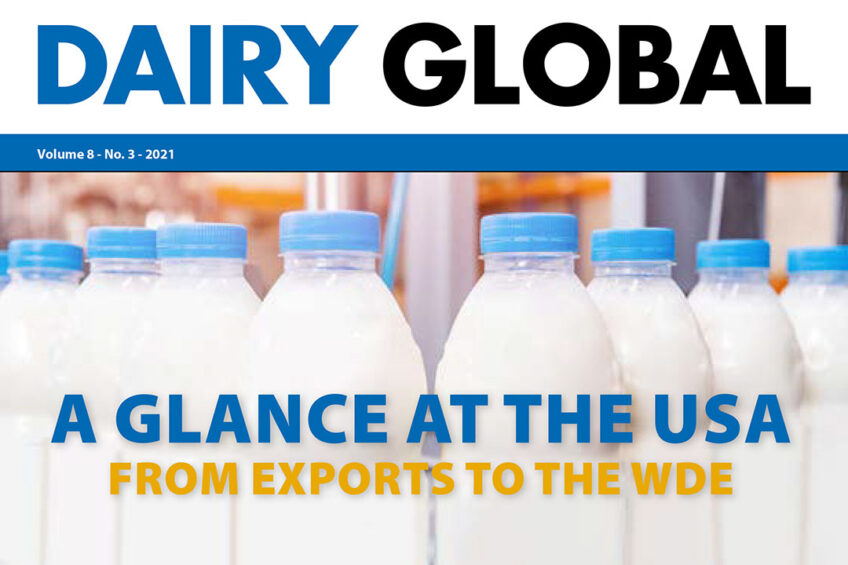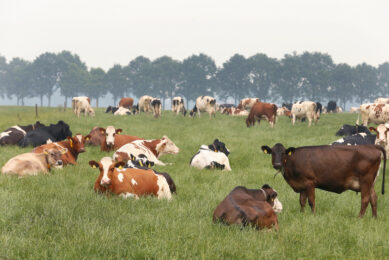Edition 3! American dairy and an innovative methane solution

In this packed magazine edition, Dairy Global covers the latest highlights in the dairy sector including a new wearable solution that has the potential to reduce methane by over 50%, a revolutionary new approach to mastitis, a deeper look at the American dairy sector, and, fly control solutions – these are just some highlights. Check out this magazine edition!
View Dairy Global’s digital magazine here: Edition number 3…
Interview: A different approach to reducing methane
Cargill and ZELP have announced a partnership to combat methane emissions in the dairy sector. Their new innovative solution has the potential to reduce methane by over 50%. Sander van Zijderveld, ruminant strategic marketing and technology lead at Cargill, tells us about combining technology in methane oxidation and data processing to minimise environmental impact. He also tells us why this technology is more than a methane-reducing tool.

US: Opportunities, growth and the WDE on the horizon
The American dairy market is seeing major opportunities. Milk production and domestic consumption are up this year. And US dairy exports really offer American farmers the opportunity to grow, says William Loux, the director of Global Trade Analysis at the US Dairy Export Council. And it’s nearly time for the World Dairy Expo this year; we take a quick look at what is expected.

View Dairy Global’s digital magazine here: Edition number 3…
Ensuring repeat grass growth is essential
Managing grasslands can be a complex task for dairy farmers and is mostly influenced by the country they are in and the climate there. Some farmers opt to keep cows out all year and take advantage of the cow being able to feed herself and dispose of her own manure, reducing the overall costs of production.

A cure for mastitis?
A revolutionary new treatment approach is being developed in New York. We take a look at the novel approach generating a lot of excitement in the sector. An effective treatment for mastitis seems like the holy grail in dairy farming. In dairy farms worldwide, this condition is common and serious, affecting cow health, milk production and, of course, farm profits.

Success stories: Innovative farming in South America
The demand for dairy products is growing in South America. At the same time, consumers are becoming more demanding when it comes to food safety, traceability, animal welfare and environmental concerns. Innovation is a way to strengthen the competitiveness of companies.

View Dairy Global’s digital magazine here: Edition number 3…
Protected fats in ruminant nutrition
The addition of fat to the diets of dairy cows can improve the energy balance in lactating cows and hence improves fertility, milk production and other biological functions. The advantages of increasing the energy density of diets without reducing digestibility can be achieved if the dietary fat is protected from hydrogenation in the rumen.

Fly control solutions – what works for your farm?
Choosing the right fly control solution for your farm can be tricky. We highlight some different methods to help you pick the best solution for your operation. House flies and stable flies are 2 of the most common fly species found on dairy farms, and they are a thorn in the side of many dairy farmers worldwide.

Genetically modified cows transforming the Russian sector
The Russian Academy of Sciences uses CRISPR/Cas9 to create a new breed of milk cows with better productivity and anti-leucosis protection. Still, there are widespread concerns about the gene-editing technology and the new breed.

Surviving high North American feed prices
It’s a financially challenging time for dairy farmers across North America as many states face a difficult growing season plagued by severe drought conditions. While milk prices have improved to an extent, the rising costs of staple ingredients – especially corn and soybean – are making it difficult for income to keep up, resulting in a persistently slim profit margin.

View Dairy Global’s digital magazine here: Edition number 3…
Join 13,000+ subscribers
Subscribe to our newsletter to stay updated about all the need-to-know content in the dairy sector, two times a week.










